Photo
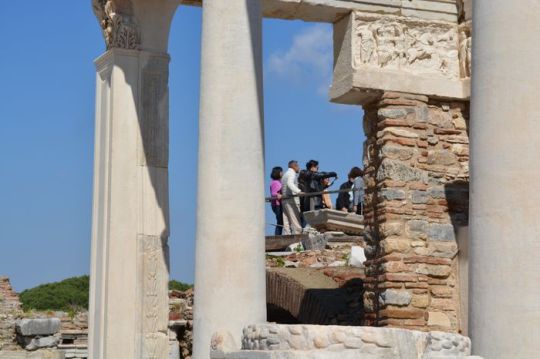
Art and Tradition in Belgrade
Unconventional Art Gallery
In Belgrade, there’s a small gallery showcasing a mix of good and mediocre artworks. However, some pieces are quite unconventional by Western standards. These paintings depict scenes of violence and gore, including decapitation and throat-cutting, attracting attention for their shocking subject matter rather than artistic merit.
Fading Traditional Attire
The traditional Serbian attire is gradually disappearing, especially among the non-peasant population. Some middle-aged women still cling to their mothers’ style, characterized by full skirts, fringed jackets, and red Turkish fezzes worn at the back of the head. However, most men and women now prefer European-style clothing Private Tours Bulgaria.
Evening Promenades and Modernization
As dusk falls, the streets of Belgrade come alive with people dressed in fashionable attire, reminiscent of an English seaside resort. The city boasts numerous shops selling picture postcards, featuring images of King Peter, while any depiction of the late King Alexander has been removed from circulation, reflecting official efforts to erase his memory.
Vibrant Market Scenes
In the bustling market squares, peasants gather to sell their produce, including sheep’s milk cheeses, grapes, peaches, melons, and tomatoes. These scenes offer glimpses of traditional Serbian culture, with sunbaked vendors sporting skin caps and white garments reminiscent of shrunken pyjamas.
0 notes
Photo
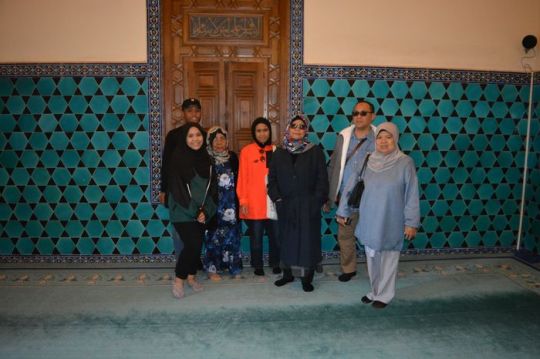
The Aftermath of Rebellion A Period of Uncertainty
Turkish Casualties and Insurgent Control
The casualties among the Turkish population in the aftermath of the uprising were minimal, with only a few deaths reported, aside from the previously mentioned gypsies who met their fate later. Following the insurgents’ seizure of the village, they wielded unchecked authority for several days. Despite their newfound control, their actions were relatively benign. They paraded through the streets in jubilant processions, proclaiming their newfound freedom and sovereignty. Surprisingly, they refrained from antagonizing neighboring Muslim villages, content with their current achievements and oblivious to the looming threat posed by the 5,000 regular troops stationed in Philippopolis.
Ignorance Amidst Freedom
The insurgents’ lack of awareness regarding the impending military response was striking. Instead of fortifying their positions or strategizing, they indulged in the simple pleasures of newfound liberty. Their festivities primarily revolved around marching through the streets and singing patriotic Bulgarian songs. However, there was one notable exception to their passive demeanor Private Tour Istanbul.
Allegations and Uncertainty
Inspired by the ease with which Avrat-Alan fell, the Christian population of neighboring Strelcha contemplated rebellion. Yet, given the village’s mixed demographics, with a substantial Turkish contingent, they sought reinforcements from Otluk-kui and Avrat-Alan. Insurgents answered the call for aid, resulting in a skirmish between the rebels and the Turkish residents. Tragically, the entire village was consumed by flames during the conflict. Both sides vehemently deny responsibility for the arson, with Christians blaming Turks and vice versa. However, it is likely that both factions played a role in the conflagration, with each targeting the other’s residential areas.
A Fractured Landscape
The events following the rebellion paint a picture of a fragile and divided community grappling with the aftermath of conflict. Amidst uncertainty and mutual suspicion, accusations fly, deepening the chasm between Christian and Muslim populations. As the smoke settles over the scorched ruins of Strelcha, it serves as a stark reminder of the destructive potential of sectarian strife and the urgent need for reconciliation and understanding.
0 notes
Photo
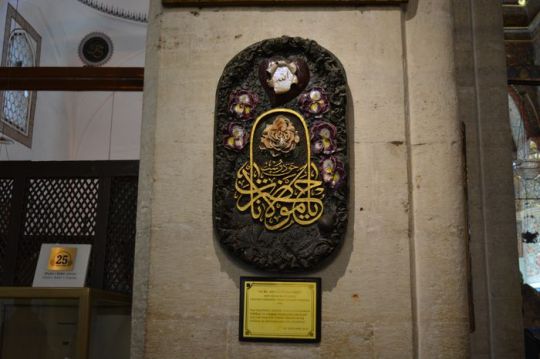
Thracian Deities and Beliefs
The Thracians revered various gods, including Dionysus, the god of wine and joy, Helios, the sun-god, and the Great Mother-Goddess, symbolizing earth and life. Later, Orphism emerged, emphasizing the immortality of the soul. Rituals, such as the beheading of Seuthes III’s statue, symbolized the journey towards immortality.
Exceptional Thracian Craftsmanship
Although primarily agrarian, the Thracians excelled in ore extraction, metalworking, and craftsmanship. Archaeological discoveries attest to their superior skills in jewelry-making, evident in intricately designed ornaments for arms, riding gear, and religious rituals Istanbul Cultural Tours.
The Thracian Tomb at Kazanlak
The Thracian Tomb in Kazanlak holds significance as Bulgaria’s first UNESCO World Heritage-listed cultural monument. Discovered in 1944 within a burial mound, its fame stems from remarkably preserved frescoes dating back to the early Hellenic era. Comprising a foyer, passageway, and burial chamber, the tomb showcases remarkable architecture and artistry.
Unveiling the Thracian Burial Chamber
The burial chamber within the Thracian Tomb housed the remains of a man and a woman. Though plundered in antiquity, artifacts such as pottery, a gold-plated silver jug, horse bones, an amphora, and golden jewelry were discovered by archaeologists, shedding light on Thracian burial customs and material culture.
0 notes
Photo
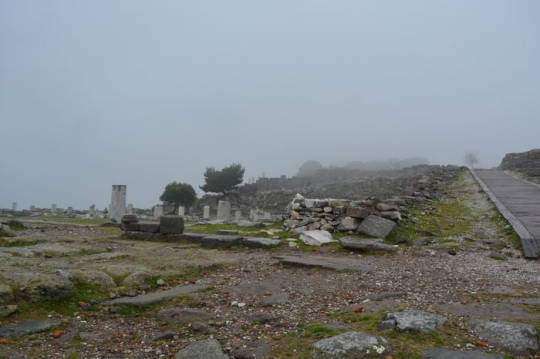
Savage Acts of Barbarity
The barbarity witnessed in Panagurishti reached unfathomable depths, exacerbated by the presence of anguished relatives forced to bear witness to the atrocities inflicted upon their loved ones. These acts of brutality were not isolated incidents but occurred repeatedly, leaving a trail of devastation and despair in their wake. Countless tales of horror emerged, revealing the indiscriminate slaughter of men, women, young girls, children, and even infants.
Heartlessness Beyond Measure
The perpetrators, devoid of pity or compassion, displayed a level of cruelty surpassing even that of wild beasts. Unlike the tiger, which refrains from slaying its own young, these Turkish assailants demonstrated a chilling disregard for innocent life. Infants were callously snatched from their cradles and tossed about with bayonets, while others were impaled upon the barrels of guns, their blood staining the hands of their tormentors. Heads of children were severed, and their still-bleeding remains callously paraded through the streets by other children Bulgaria Tours.
Eyewitness Testimony of Unimaginable Horror
These chilling accounts, recounted by eyewitnesses and meticulously recorded by Mr. Schuyler, bear testament to the unimaginable horrors witnessed in Panagurishti. The tears, anguish, and despair of those who lived through these nightmarish events underscore the gravity of the atrocities committed. Hundreds of women came forward to share their harrowing experiences, each one a testament to the widespread nature of the outrages inflicted upon the populace.
The Painful Truth Revealed
The testimonies of these women laid bare the painful truth of their suffering, with not a single woman in the village escaping the horrors of outrage. While in other places, reluctance to speak out may have been observed, in Panagurishti, the women did not hesitate to recount their ordeals. Even at Avrat-Alan, where a sense of reluctance initially prevailed, a delegation of ladies eventually mustered the courage to convey their grievances to Mr. Schuyler, leaving behind a poignant letter detailing the widespread nature of the outrages.
The Depths of Human Cruelty
The atrocities witnessed in Panagurishti stand as a testament to the depths of human cruelty unleashed during times of conflict. The harrowing testimonies of survivors serve as a stark reminder of the urgent need for justice and accountability to prevent such atrocities from recurring in the future.
0 notes
Photo
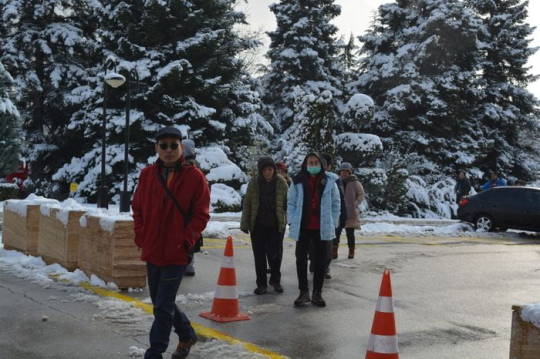
Unveiling Horrors The Journey to Batak
A Grim Revelation
Since my last correspondence, each passing moment has unfolded a new layer of horror, leaving me shaken to the core. There is no tale of Turkish brutality that I do not now find credible, no atrocity beyond the realm of possibility. The Turks have surpassed all limits of barbarity, reaching a point where mere words fail to convey the depth of their depravity.
A Threshold of Inhumanity
There comes a point where the atrocities become so egregious that rational analysis falters, and the mind recoils in horror. The path forward is obscured by mountains of unspeakable cruelty, rendering further investigation futile. It is a realm where moral compasses shatter, and the soul cries out for respite from the relentless onslaught of brutality Private Guide Turkey.
A Perilous Journey to Batak
Our journey to Batak was fraught with obstacles, as local authorities, aggrieved by Mr. Schuyler’s refusal to be accompanied by Turkish officials, sought to impede our progress. Despite their efforts to thwart us, the resilience of the villagers prevailed, as they clandestinely provided us with horses to continue our journey.
Defying Oppression
In the face of official prohibition, the villagers defied orders with remarkable determination, initially presenting us with horses without saddles as a subtle protest. Undeterred, we requested saddles, prompting the villagers to swiftly comply, their actions a silent rebuke to the oppressive dictates of authority.
Unified Resolve
Amidst the challenges and uncertainties of our journey, the unwavering solidarity of the villagers emerged as a beacon of hope. Despite the specter of retribution, they stood united in their defiance, demonstrating an indomitable spirit in the face of tyranny.
A Testament to Resilience
As we embarked on the next leg of our journey, the echoes of the villagers’ resolve lingered in the air, a poignant reminder of the human capacity for resistance in the darkest of times. In their defiance, we found inspiration, reaffirming our commitment to bearing witness to the unspeakable horrors that awaited us in Batak.
0 notes
Photo
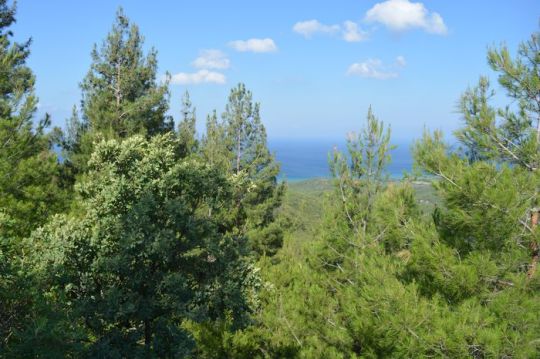
Bulgarian Cultural Development
From Old Bulgarian to Cyrillic Alphabet
Adoption of Slavonic Language (893)
In the year 893, the Bulgarians embraced the Slavonic language, later recognized as “Old Bulgarian,” as their official tongue. This linguistic shift gave rise to a literary tradition known today as “Old Slavonic,” primarily focused on ecclesiastical matters.
Creation of Old Bulgarian Alphabet (9th Century)
The Old Bulgarian alphabet used in early ecclesiastical literature was devised by two brothers, Cyril and Methodius, hailing from Salonica. These brothers were later canonized in the Eastern Orthodox Church. Originally called Glagolitsa, their alphabet is now referred to as “Cyrillic” in its contemporary modified form. The dissemination of the Cyrillic alphabet in Bulgaria was championed by Cyril and Methodius’ disciples, particularly Kliment and Naum. Kliment established a school in Ochrid, while Naum founded another in Preslav.
Literary Centers in Ochrid and Preslav (9th-10th Centuries)
The schools in Ochrid and Preslav emerged as crucial hubs of Bulgarian literature. Kliment, active in Ochrid until his death in 916, authored twenty-seven works. Meanwhile, at Preslav, numerous Greek books were translated into Bulgarian. This period, flourishing under the rule of King Simeon I (865-927), is renowned as the “golden age” of Bulgarian literature Private Istanbul Tour.
Secular Literary Breakthrough: Chernorizets Khrabur
Chernorizets Khrabur was a pivotal secular writer who deviated from religious themes. His work “About the Letters” served as a polemic defending young Bulgarian literature against critiques from Greek writers.
Cultural Impact and Alphabet Adoption by Other Slavic Peoples
The literary endeavors in medieval Bulgaria led to the widespread adoption of the Bulgarian alphabet by various Slavic communities, including Serbs, Cossacks, Russians, and Ukrainians. This cultural exchange left an enduring mark on the linguistic and literary heritage of these Slavic nations.
0 notes
Photo
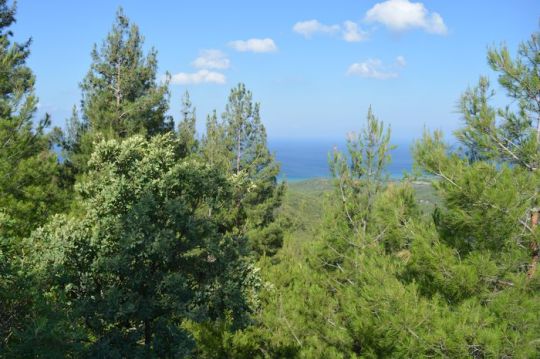
Bulgarian Cultural Development
From Old Bulgarian to Cyrillic Alphabet
Adoption of Slavonic Language (893)
In the year 893, the Bulgarians embraced the Slavonic language, later recognized as “Old Bulgarian,” as their official tongue. This linguistic shift gave rise to a literary tradition known today as “Old Slavonic,” primarily focused on ecclesiastical matters.
Creation of Old Bulgarian Alphabet (9th Century)
The Old Bulgarian alphabet used in early ecclesiastical literature was devised by two brothers, Cyril and Methodius, hailing from Salonica. These brothers were later canonized in the Eastern Orthodox Church. Originally called Glagolitsa, their alphabet is now referred to as “Cyrillic” in its contemporary modified form. The dissemination of the Cyrillic alphabet in Bulgaria was championed by Cyril and Methodius’ disciples, particularly Kliment and Naum. Kliment established a school in Ochrid, while Naum founded another in Preslav.
Literary Centers in Ochrid and Preslav (9th-10th Centuries)
The schools in Ochrid and Preslav emerged as crucial hubs of Bulgarian literature. Kliment, active in Ochrid until his death in 916, authored twenty-seven works. Meanwhile, at Preslav, numerous Greek books were translated into Bulgarian. This period, flourishing under the rule of King Simeon I (865-927), is renowned as the “golden age” of Bulgarian literature Private Istanbul Tour.
Secular Literary Breakthrough: Chernorizets Khrabur
Chernorizets Khrabur was a pivotal secular writer who deviated from religious themes. His work “About the Letters” served as a polemic defending young Bulgarian literature against critiques from Greek writers.
Cultural Impact and Alphabet Adoption by Other Slavic Peoples
The literary endeavors in medieval Bulgaria led to the widespread adoption of the Bulgarian alphabet by various Slavic communities, including Serbs, Cossacks, Russians, and Ukrainians. This cultural exchange left an enduring mark on the linguistic and literary heritage of these Slavic nations.
0 notes
Photo
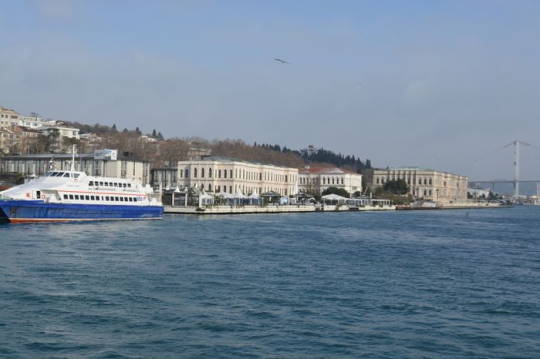
Bulgaria's Economic Recovery and Challenges (1997-2000)
The “Blue” Government and Rapid Reforms
The provisional government, led by the “blue” mayor of Sofia, Stefan Sofianski, took swift measures to stabilize Bulgaria’s financial situation and introduced the currency board. In the elections on April 19, 1997, the newly formed Allied Democratic Forces (ADF) faced a decisive defeat against the Socialists, resulting in an absolute parliamentary majority for the ADF. A month later, Ivan Kostov, the leader of the ADF, assumed leadership of the new “blue” government, enjoying broad social support. The primary challenge before the cabinet was the implementation of much-needed reforms.
Kostov’s Leadership and Foreign Policy
During Prime Minister Ivan Kostov’s rule from 1997 to 2001, often affectionately referred to as the “Commander” by his supporters, efforts were concentrated on rebuilding the country after the devastating impact of Videnov’s cabinet. Kostov’s foreign policy played a crucial role in securing Bulgaria’s membership in the International Monetary Fund and International Bank for Reconstruction and Development. The country shifted toward a policy of political and economic alignment with the West, particularly the USA. Concurrently, the domestic market faced an influx of goods of questionable quality, mainly imported from the Far and Near East Guided Turkey Tours .
Financial Reforms and the Rise of the “Grey Economy”
The financial system underwent significant reforms from 1997 to 1999, impacting small businesses and expanding the basis for the “grey economy.” This informal sector gained prominence as people, facing reduced incomes, sought ways to avoid social security payments and other financial obligations to the state. The ties between official institutions and agencies with criminal economic structures became evident. Prime Minister Rostov’s personal control over various economic spheres generated discontent, leading some former supporters to leave the “Blue Alliance” and form their own organizations and parties. By the year 2000, a substantial portion of those who had voted for the ADF in 1997, particularly representatives of small and medium-sized private businesses, were anticipating a change.
0 notes
Photo
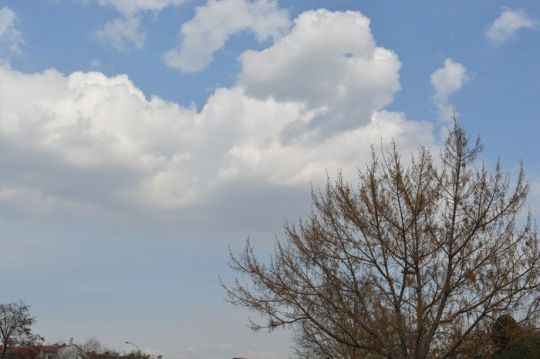
Klissura's Heartbreaking Ordeal
The Lingering Agony of Klissura
This article plunges into the heart-wrenching tales of Klissura, unraveling the profound suffering endured by its inhabitants. From the cruel abduction of children to the despair of forsaken mothers, Klissura’s agony echoes through the ages, challenging the conscience of those who bear witness to its sorrow.
The Illusion of Liberation
In a disheartening revelation, the Mutle-Serif of Philippopolis shamelessly denied the existence of orders forbidding villagers from leaving Klissura. Yet, the reality spoke otherwise. The villagers, trapped within the remnants of their homes, were denied the fundamental freedom to seek opportunities beyond the confines of their shattered village. This illusion of liberation further tightened the chains of oppression, leaving the people shackled in despair.
The Tragedy of Forced Conversions
Klissura, akin to Batak, bore witness to the tragic abduction of children and young girls. Carried off to neighboring Turkish villages, these innocent souls faced a harrowing fate – forced conversion to Islam. The parents, grappling with the agony of separation, found themselves powerless in the quest to reclaim their children. The echoes of these tragic stories reverberate not only in Klissura but also in Tatar Bazardjik and Philippopolis Private Tours Bulgaria, underscoring the pervasive cruelty of these forced conversions.
Women’s Heartrending Pleas
As we departed Klissura, a procession of despair unfolded. Miserable, haggard women, many cradling infants, pursued our departure. Their wails and cries painted a haunting portrait of desperation, a poignant outcry for relief that remained elusive. Klissura’s women, burdened by the weight of sorrow, pleaded for change, for a glimmer of hope that had eluded them for three long months.
Klissura’s Unheard Suffering
Klissura’s ordeal, marked by the denial of freedom and the tragedy of forced conversions, remains a silent scream in the corridors of history. The Mutle-Serif’s denial echoes the broader silence that surrounds the suffering of Klissura. As these stories unfold, it becomes imperative for the world to turn its gaze towards the silent cries of Klissura, acknowledging the agony that persists in the shadows.
0 notes
Photo

Klissura's Heartbreaking Ordeal
The Lingering Agony of Klissura
This article plunges into the heart-wrenching tales of Klissura, unraveling the profound suffering endured by its inhabitants. From the cruel abduction of children to the despair of forsaken mothers, Klissura’s agony echoes through the ages, challenging the conscience of those who bear witness to its sorrow.
The Illusion of Liberation
In a disheartening revelation, the Mutle-Serif of Philippopolis shamelessly denied the existence of orders forbidding villagers from leaving Klissura. Yet, the reality spoke otherwise. The villagers, trapped within the remnants of their homes, were denied the fundamental freedom to seek opportunities beyond the confines of their shattered village. This illusion of liberation further tightened the chains of oppression, leaving the people shackled in despair.
The Tragedy of Forced Conversions
Klissura, akin to Batak, bore witness to the tragic abduction of children and young girls. Carried off to neighboring Turkish villages, these innocent souls faced a harrowing fate – forced conversion to Islam. The parents, grappling with the agony of separation, found themselves powerless in the quest to reclaim their children. The echoes of these tragic stories reverberate not only in Klissura but also in Tatar Bazardjik and Philippopolis Private Tours Bulgaria, underscoring the pervasive cruelty of these forced conversions.
Women’s Heartrending Pleas
As we departed Klissura, a procession of despair unfolded. Miserable, haggard women, many cradling infants, pursued our departure. Their wails and cries painted a haunting portrait of desperation, a poignant outcry for relief that remained elusive. Klissura’s women, burdened by the weight of sorrow, pleaded for change, for a glimmer of hope that had eluded them for three long months.
Klissura’s Unheard Suffering
Klissura’s ordeal, marked by the denial of freedom and the tragedy of forced conversions, remains a silent scream in the corridors of history. The Mutle-Serif’s denial echoes the broader silence that surrounds the suffering of Klissura. As these stories unfold, it becomes imperative for the world to turn its gaze towards the silent cries of Klissura, acknowledging the agony that persists in the shadows.
0 notes
Photo
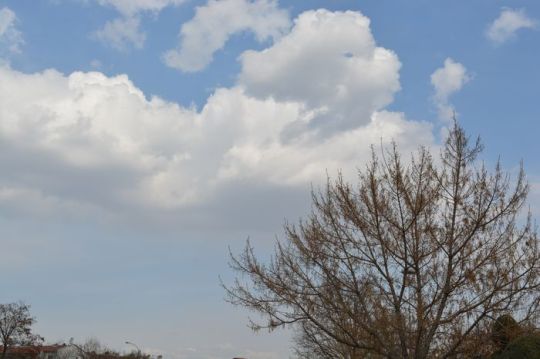
Klissura's Heartbreaking Ordeal
The Lingering Agony of Klissura
This article plunges into the heart-wrenching tales of Klissura, unraveling the profound suffering endured by its inhabitants. From the cruel abduction of children to the despair of forsaken mothers, Klissura’s agony echoes through the ages, challenging the conscience of those who bear witness to its sorrow.
The Illusion of Liberation
In a disheartening revelation, the Mutle-Serif of Philippopolis shamelessly denied the existence of orders forbidding villagers from leaving Klissura. Yet, the reality spoke otherwise. The villagers, trapped within the remnants of their homes, were denied the fundamental freedom to seek opportunities beyond the confines of their shattered village. This illusion of liberation further tightened the chains of oppression, leaving the people shackled in despair.
The Tragedy of Forced Conversions
Klissura, akin to Batak, bore witness to the tragic abduction of children and young girls. Carried off to neighboring Turkish villages, these innocent souls faced a harrowing fate – forced conversion to Islam. The parents, grappling with the agony of separation, found themselves powerless in the quest to reclaim their children. The echoes of these tragic stories reverberate not only in Klissura but also in Tatar Bazardjik and Philippopolis Private Tours Bulgaria, underscoring the pervasive cruelty of these forced conversions.
Women’s Heartrending Pleas
As we departed Klissura, a procession of despair unfolded. Miserable, haggard women, many cradling infants, pursued our departure. Their wails and cries painted a haunting portrait of desperation, a poignant outcry for relief that remained elusive. Klissura’s women, burdened by the weight of sorrow, pleaded for change, for a glimmer of hope that had eluded them for three long months.
Klissura’s Unheard Suffering
Klissura’s ordeal, marked by the denial of freedom and the tragedy of forced conversions, remains a silent scream in the corridors of history. The Mutle-Serif’s denial echoes the broader silence that surrounds the suffering of Klissura. As these stories unfold, it becomes imperative for the world to turn its gaze towards the silent cries of Klissura, acknowledging the agony that persists in the shadows.
0 notes
Photo

Klissura's Heartbreaking Ordeal
The Lingering Agony of Klissura
This article plunges into the heart-wrenching tales of Klissura, unraveling the profound suffering endured by its inhabitants. From the cruel abduction of children to the despair of forsaken mothers, Klissura’s agony echoes through the ages, challenging the conscience of those who bear witness to its sorrow.
The Illusion of Liberation
In a disheartening revelation, the Mutle-Serif of Philippopolis shamelessly denied the existence of orders forbidding villagers from leaving Klissura. Yet, the reality spoke otherwise. The villagers, trapped within the remnants of their homes, were denied the fundamental freedom to seek opportunities beyond the confines of their shattered village. This illusion of liberation further tightened the chains of oppression, leaving the people shackled in despair.
The Tragedy of Forced Conversions
Klissura, akin to Batak, bore witness to the tragic abduction of children and young girls. Carried off to neighboring Turkish villages, these innocent souls faced a harrowing fate – forced conversion to Islam. The parents, grappling with the agony of separation, found themselves powerless in the quest to reclaim their children. The echoes of these tragic stories reverberate not only in Klissura but also in Tatar Bazardjik and Philippopolis Private Tours Bulgaria, underscoring the pervasive cruelty of these forced conversions.
Women’s Heartrending Pleas
As we departed Klissura, a procession of despair unfolded. Miserable, haggard women, many cradling infants, pursued our departure. Their wails and cries painted a haunting portrait of desperation, a poignant outcry for relief that remained elusive. Klissura’s women, burdened by the weight of sorrow, pleaded for change, for a glimmer of hope that had eluded them for three long months.
Klissura’s Unheard Suffering
Klissura’s ordeal, marked by the denial of freedom and the tragedy of forced conversions, remains a silent scream in the corridors of history. The Mutle-Serif’s denial echoes the broader silence that surrounds the suffering of Klissura. As these stories unfold, it becomes imperative for the world to turn its gaze towards the silent cries of Klissura, acknowledging the agony that persists in the shadows.
0 notes
Photo
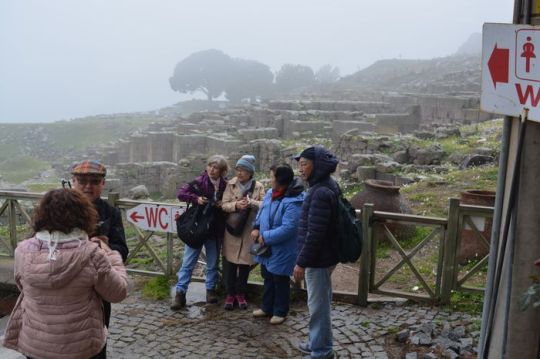
Unveiling the Singular Clash
Turmoil in Strelcha and the Weight of Vengeance
Strelcha’s Singular Strife A Rare Confrontation Amidst Balkan Unrest
In the turbulent landscape of post-uprising Balkans, the village of Strelcha emerged as an anomaly, witnessing a clash between Christians and Turks—a rarity in the broader narrative of rebellion. The unique characteristic of Strelcha, a mixed village housing both Christian and Turkish communities, set the stage for an inevitable confrontation once the decision to rise up had been made.
The Unfolding Battle An Inevitable Confrontation
As the insurgents from Otluk-kui and Avrat-Alan rallied to support the Christian cause in Strelcha, a confrontation became unavoidable. In the intricate dance of communal relations, the lines were drawn, and the villagers found themselves at odds with each other. Yet, amidst the chaos of battle, a distinctive aspect stands out—the deliberate effort of both Christian and Turkish women and children to seek refuge in the fields, avoiding the direct impact of the conflict.
The absence of recorded incidents of Turkish women or children being killed or violated during the clash speaks to a shared understanding between the warring factions to protect the vulnerable members of their communities. However, as the winds of fortune shifted, and the Turks gained dominance, the repercussions would be severe and unrestrained Bulgaria Private Tours.
Vengeance Unleashed Understanding the Depths of Retribution
In the aftermath of the confrontation, with Strelcha succumbing to the flames of conflict, the Turks seized the upper hand. What followed was a grim tableau of vengeance—retribution wrought upon Christian neighbors and their families. The scars of this vengeful act, although fueled by the exasperation of witnessing their homes in flames, leave an indelible mark on the collective memory of Strelcha.
While acknowledging the extenuating circumstances that may have contributed to the Turks’ actions, the massacre in Strelcha stands as a singular case where the Christian population actively engaged in hostilities against their Turkish neighbors. The subsequent vengeance, however cruel and unjustifiable, takes on a different hue in comparison to the widespread, cold-blooded atrocities witnessed in other regions.
In the grand tapestry of Balkan unrest, Strelcha’s singular clash serves as a poignant reminder of the complexities that underlie communal relationships during times of upheaval. As the flames of vengeance subside, they leave behind a village scarred not only by the physical toll of conflict but also by the profound repercussions of a clash that defied the broader trends of post-uprising dynamics in the region.
0 notes
Photo

Unveiling the Singular Clash
Turmoil in Strelcha and the Weight of Vengeance
Strelcha’s Singular Strife A Rare Confrontation Amidst Balkan Unrest
In the turbulent landscape of post-uprising Balkans, the village of Strelcha emerged as an anomaly, witnessing a clash between Christians and Turks—a rarity in the broader narrative of rebellion. The unique characteristic of Strelcha, a mixed village housing both Christian and Turkish communities, set the stage for an inevitable confrontation once the decision to rise up had been made.
The Unfolding Battle An Inevitable Confrontation
As the insurgents from Otluk-kui and Avrat-Alan rallied to support the Christian cause in Strelcha, a confrontation became unavoidable. In the intricate dance of communal relations, the lines were drawn, and the villagers found themselves at odds with each other. Yet, amidst the chaos of battle, a distinctive aspect stands out—the deliberate effort of both Christian and Turkish women and children to seek refuge in the fields, avoiding the direct impact of the conflict.
The absence of recorded incidents of Turkish women or children being killed or violated during the clash speaks to a shared understanding between the warring factions to protect the vulnerable members of their communities. However, as the winds of fortune shifted, and the Turks gained dominance, the repercussions would be severe and unrestrained Bulgaria Private Tours.
Vengeance Unleashed Understanding the Depths of Retribution
In the aftermath of the confrontation, with Strelcha succumbing to the flames of conflict, the Turks seized the upper hand. What followed was a grim tableau of vengeance—retribution wrought upon Christian neighbors and their families. The scars of this vengeful act, although fueled by the exasperation of witnessing their homes in flames, leave an indelible mark on the collective memory of Strelcha.
While acknowledging the extenuating circumstances that may have contributed to the Turks’ actions, the massacre in Strelcha stands as a singular case where the Christian population actively engaged in hostilities against their Turkish neighbors. The subsequent vengeance, however cruel and unjustifiable, takes on a different hue in comparison to the widespread, cold-blooded atrocities witnessed in other regions.
In the grand tapestry of Balkan unrest, Strelcha’s singular clash serves as a poignant reminder of the complexities that underlie communal relationships during times of upheaval. As the flames of vengeance subside, they leave behind a village scarred not only by the physical toll of conflict but also by the profound repercussions of a clash that defied the broader trends of post-uprising dynamics in the region.
0 notes
Photo

Unveiling the Singular Clash
Turmoil in Strelcha and the Weight of Vengeance
Strelcha’s Singular Strife A Rare Confrontation Amidst Balkan Unrest
In the turbulent landscape of post-uprising Balkans, the village of Strelcha emerged as an anomaly, witnessing a clash between Christians and Turks—a rarity in the broader narrative of rebellion. The unique characteristic of Strelcha, a mixed village housing both Christian and Turkish communities, set the stage for an inevitable confrontation once the decision to rise up had been made.
The Unfolding Battle An Inevitable Confrontation
As the insurgents from Otluk-kui and Avrat-Alan rallied to support the Christian cause in Strelcha, a confrontation became unavoidable. In the intricate dance of communal relations, the lines were drawn, and the villagers found themselves at odds with each other. Yet, amidst the chaos of battle, a distinctive aspect stands out—the deliberate effort of both Christian and Turkish women and children to seek refuge in the fields, avoiding the direct impact of the conflict.
The absence of recorded incidents of Turkish women or children being killed or violated during the clash speaks to a shared understanding between the warring factions to protect the vulnerable members of their communities. However, as the winds of fortune shifted, and the Turks gained dominance, the repercussions would be severe and unrestrained Bulgaria Private Tours.
Vengeance Unleashed Understanding the Depths of Retribution
In the aftermath of the confrontation, with Strelcha succumbing to the flames of conflict, the Turks seized the upper hand. What followed was a grim tableau of vengeance—retribution wrought upon Christian neighbors and their families. The scars of this vengeful act, although fueled by the exasperation of witnessing their homes in flames, leave an indelible mark on the collective memory of Strelcha.
While acknowledging the extenuating circumstances that may have contributed to the Turks’ actions, the massacre in Strelcha stands as a singular case where the Christian population actively engaged in hostilities against their Turkish neighbors. The subsequent vengeance, however cruel and unjustifiable, takes on a different hue in comparison to the widespread, cold-blooded atrocities witnessed in other regions.
In the grand tapestry of Balkan unrest, Strelcha’s singular clash serves as a poignant reminder of the complexities that underlie communal relationships during times of upheaval. As the flames of vengeance subside, they leave behind a village scarred not only by the physical toll of conflict but also by the profound repercussions of a clash that defied the broader trends of post-uprising dynamics in the region.
0 notes
Photo
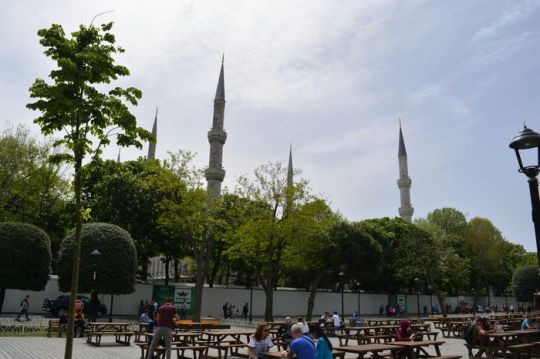
Whole world the Bulgarian people's right
The Bulgarian national revolution, vividly and inimitably illuminated by his pen, stirred public opinion in Europe and demonstrated to the whole world the Bulgarian people’s right to freedom and independence.
Born on 12 June 1844 near New Lexington, Ohio, USA, of Irish parentage, januarius MacGahan began his schooling in America, continued it in Europe, and studied law at Brussels University. On the outbreak of the Franco-Prussian war in 1870, he set out for the battlefields as correspondent of the «New York Herald ». Following his baptism of fire as a war correspondent, his life was to be one of constant encounters with difficulties and danger. In 1871, he found himself in the midst of the gunfire of the Commune of Paris Istanbul Private Tours.
MacGahan ivas
Throughout this brief but heroic episode, MacGahan ivas the only newspaper correspondent on the scene — the witness, participant and chronicler of the Commune. Five years later in Bulgaria, at Panagurishte, he was to be filled with passionate admiration for the Bulgarian insurgents, who, for him, had much in common with the Paris communards. But meanwhile the tempering of his character continues in Russia. In 1873, in defiance of the ban imposed by the tsarist government, he reached the Russian army in Turkestan and sent despatches to the «New York Herald» on Russian military operations in Asia.
MacGahan’s descriptions of the capitulation of Khiva (« Campaigning on the Oxus, and the Fall of Khiva») are considered to be masterpieces of military journalism. Whether in Cuba or Spain, in England or France, or within the Arctic circle on the « Pandora » expedition (« Under the Northern lights »), MacGahan always upheld the highest ideals of his time and raised a strong voice in the defense of Man.
0 notes
Photo

Arisen here as follows
The troubles seem to have arisen here as follows ; and I will only preface the relation of what occurred with the remark that the same atrocities and horrors, the same scenes of pillage, violence, and massacre occurred here as elsewhere. If I do not dwell upon them more in detail it is because I think I have already given the reader a sufficiently clear idea of what the pillage of a village and the massacre of its inhabitants really means, and it is useless to go on repeating these harrowing stories to infinitude.
Perustitza was a place of 350 houses and from 2,000 to 2,500 inhabitants. It was nearly the only village where anv real resistance was offered, the Bashi-Bazouks, and the people here defended themselves with far more vigour unprepared as they were, than did the inhabitants of Otluk-kui, who had gone to the trouble of making fortifications. But, in spite of the assertions of the Turks, I do not think that Mr. Schuyler has obtained any evidence to show that there was anything like a real insurrection here. All that can be made of the mass of conflicting evidence is that the country was in a state of great agitation and excitement owing to the circulation of rumours about the intended declaration of war by Servia ; that the Christians and Mussulmans were about equally afraid of each other, and that the former especially were in a state of panic, only too well justified by subsequent events.
The inhabitants of Perustitza deny that there was any insurgent committee in the village, or that any insurrection was organized here. The only proof the Turks offer of the contrary, was that many of the people had buried their valuable effects early in the spring, and had planted their crops over them so as to effectually hide them, thus giving evidence that they knew an insurrection was preparing weeks before it actually broke out. This is simply no proof at all Guided Tours Turkey.
These Bulgarians are so accustomed to lawless acts of violence, to spoliation and robbery by Turkish officials, as by thieves and brigands, that they always keep whatever little money they may have put by buried in the ground, and upon the slightest alarm they bury everything valuable that they have no immediate use for and that will not spoil by being put in the earth. This fact is rather an evidence of Turkish misrule than of anything else, and only shows the general state of insecurity in which people live here.
0 notes